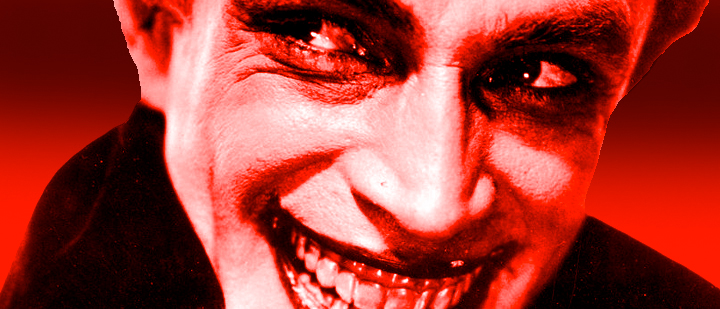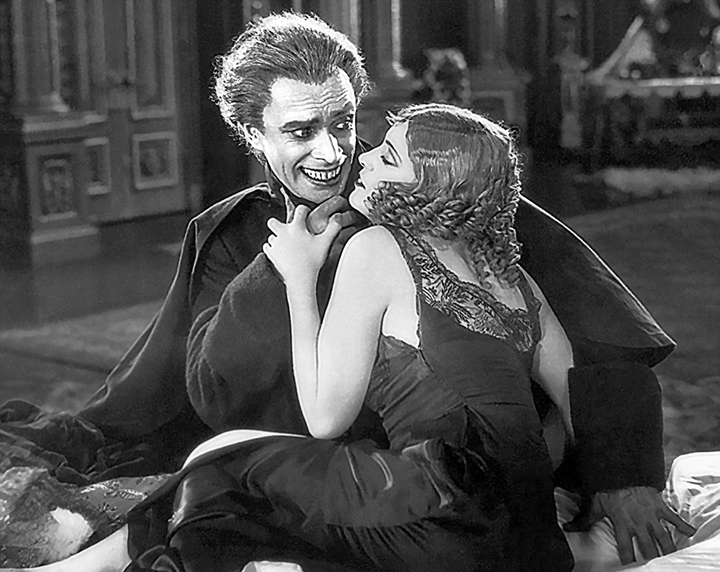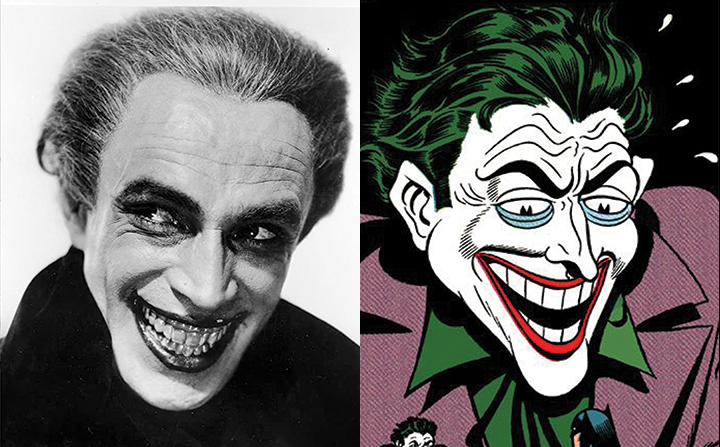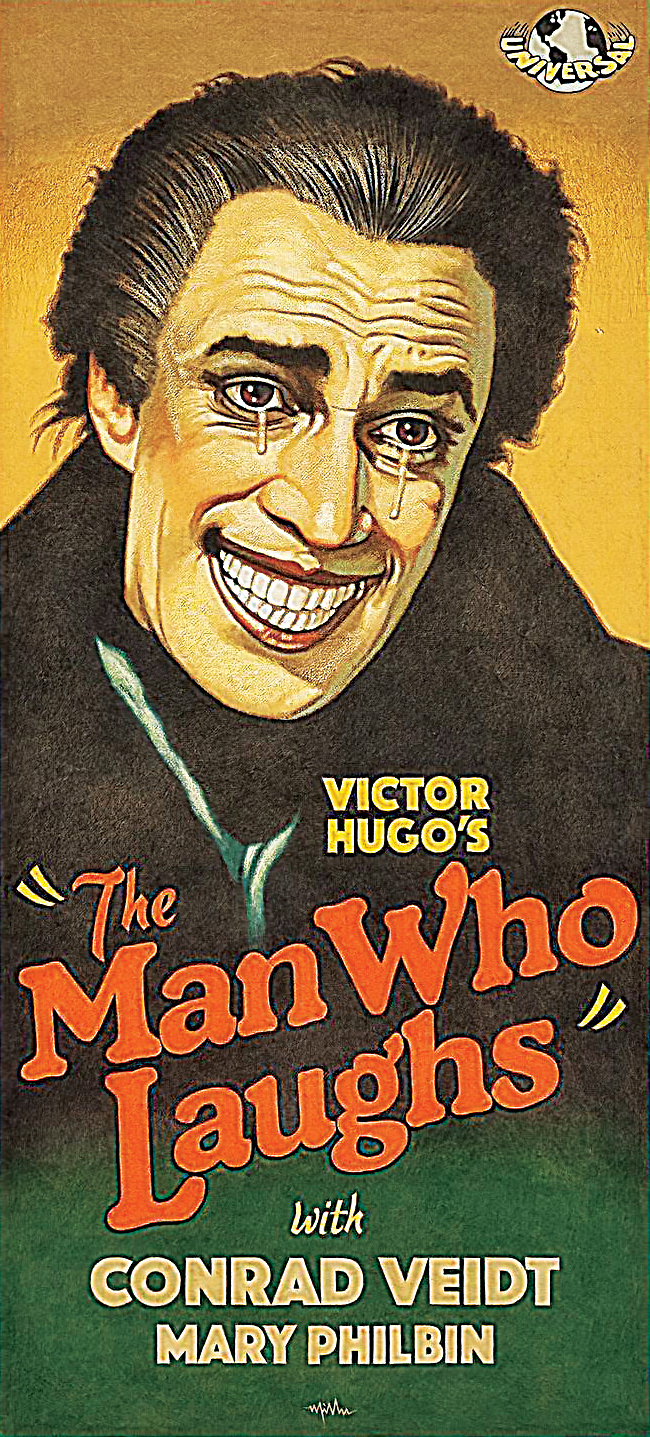
Move over, Quasimodo
Though Universal’s “Phantom of the Opera” (1925) and “Dracula” (1931) are separated by a mere six years, there is a marked contrast in production values and tone between the two films. (After all, the rise of talkies occurred during the interim.) Is there a “bridge” between the two genre classics? A film that reconciles their stylistic gap?
If so, it must be Paul Leni‘s “The Man Who Laughs” (1928), a Victor Hugo adaptation starring Conrad Veidt, an expatriate German actor. Veidt is glorious as Gwynplaine, a descendant of noblemen who, as a boy, falls in the clutches of comprachicos (or “child buyers”) infamous for intentionally deforming the faces of children via surgery, for the purpose of creating profitable sideshow freaks. In Gwynplaine’s case, the deformity is a permanent smile — hence, Hugo’s title — with grotesque, outsized teeth.

Yes, these themes are similar to those in an earlier Hugo adaptation, 1923’s “The Hunchback of Notre Dame” starring Lon Chaney Sr. (who was originally slated to play Gwynplaine). In both films, deformed men seek love and survival in a world that mocks them — a world itself torn by painful class disparities. “Hunchback” and “Laughs” would make a sweet double-feature.
“The Man Who Laughs” also stars Mary Philbin (who unmasked Chaney in “Phantom of the Opera”) as Dea, a blind girl who loves Gwynplaine despite his deformity; Cesare Gravina as a traveling showman who adopts Gwynplaine and Dea after finding them nearly frozen to death during a blizzard; and Olga Baklanova as a titled lady who undertakes a mission to seduce Gwynplaine. (Who can forget Baklanova as the conniving trapese artist in 1932’s “Freaks” by Tod Browning?) Universal makeup artist Jack P. Pierce — later responsible for the looks of the Frankenstein monster, the Mummy and the Wolf Man — created the look of Gwynplaine (which itself influenced the look of the Joker).

Something else that supports my “bridges the gap” theory: In a followup to its initial release, “The Man Who Laughs” was neither a silent film (as with “Phantom”) nor a sync-sound film (as with “Dracula”), but a hybrid not uncommon during the period. The film proved so successful that it was recalled and re-released with a non-sync soundtrack that featured sound effects, background music, and some human voices (mostly during crowd scenes). But the inclusion of the song “When Love Comes Stealing,” sung by a soprano and heard twice, is wince-worthy in an otherwise perfect film.
“The Man Who Laughs” is an epic with superlative period set design and costuming, a smart script and hundreds of extras. But the film is dominated by Veidt, who can act only with his eyes, since the rest of his features are immovable. Veidt — earlier the zombie in “Cabinet of Dr. Caligari” (1920) and later the Gestapo enforcer in “Casablanca” (1942) — gives a haunting, heartrending performance that more people need to see.
‘THE MAN WHO LAUGHS’
Starring Mary Philbin as Dea; Conrad Veidt as Gwynplaine; Olga Baklanova as Josiana; Cesare Gravina as Ursus; and Brandon Hurst as Barkiphedro
Adapted by J. Grubb Alexander from the Victor Hugo novel
Cinematography by Gilbert Warrenton
Produced by Carl Laemmle | Directed by Paul Leni
[Universal Pictures]
